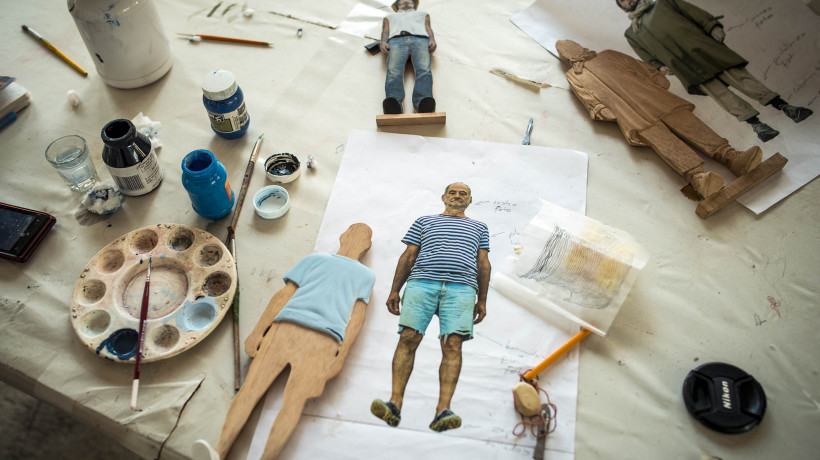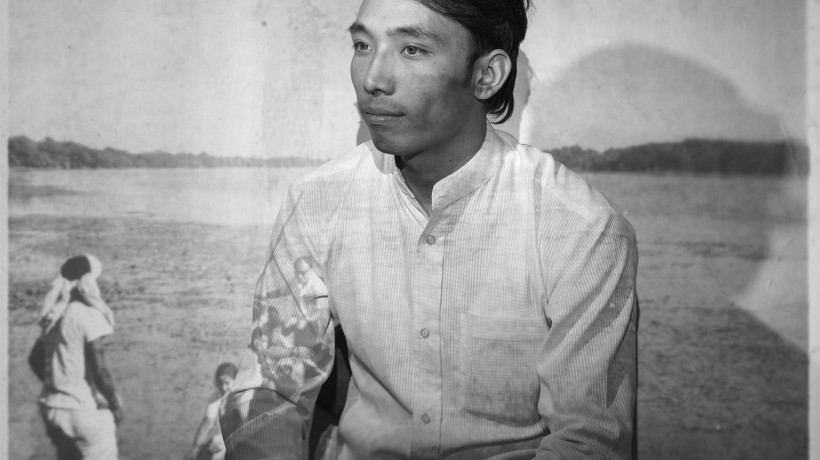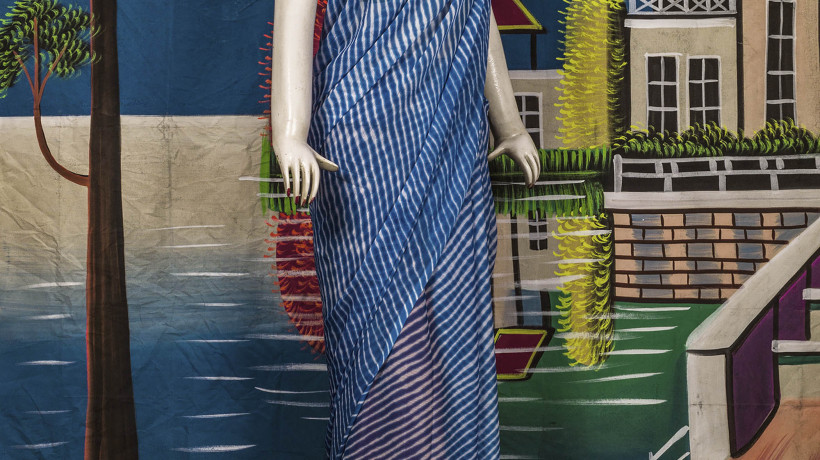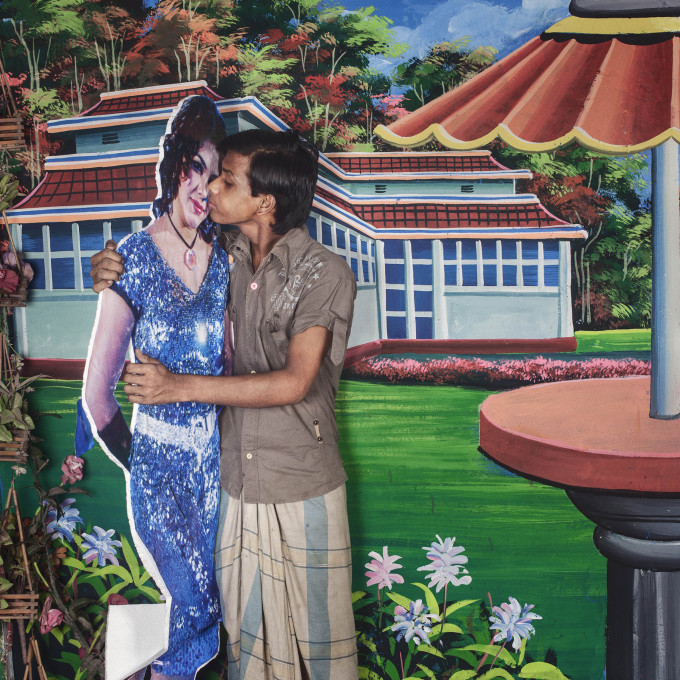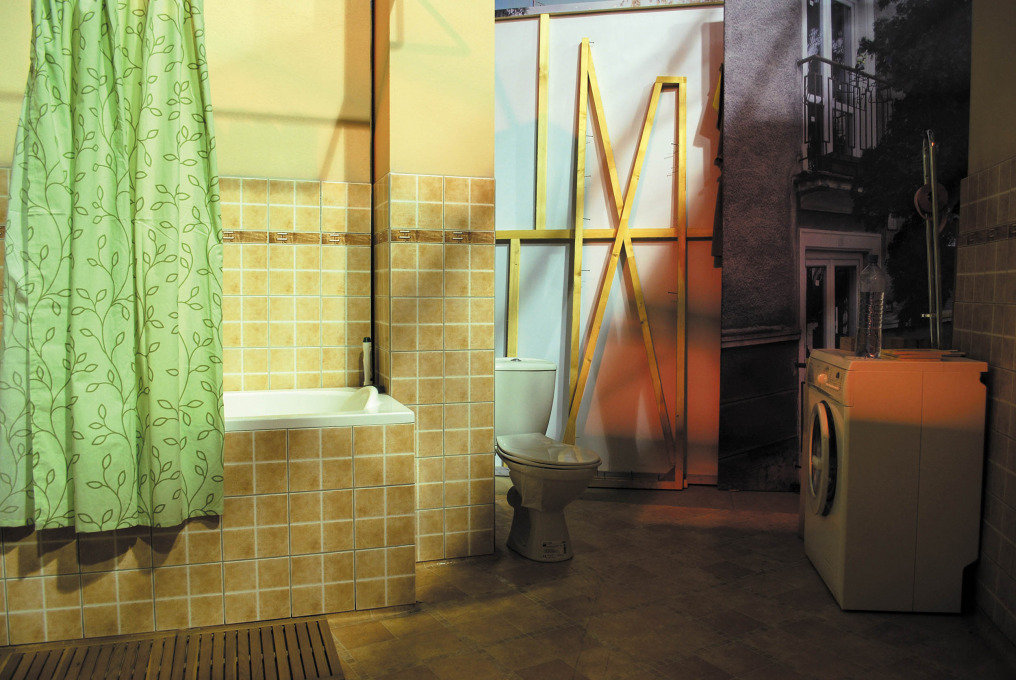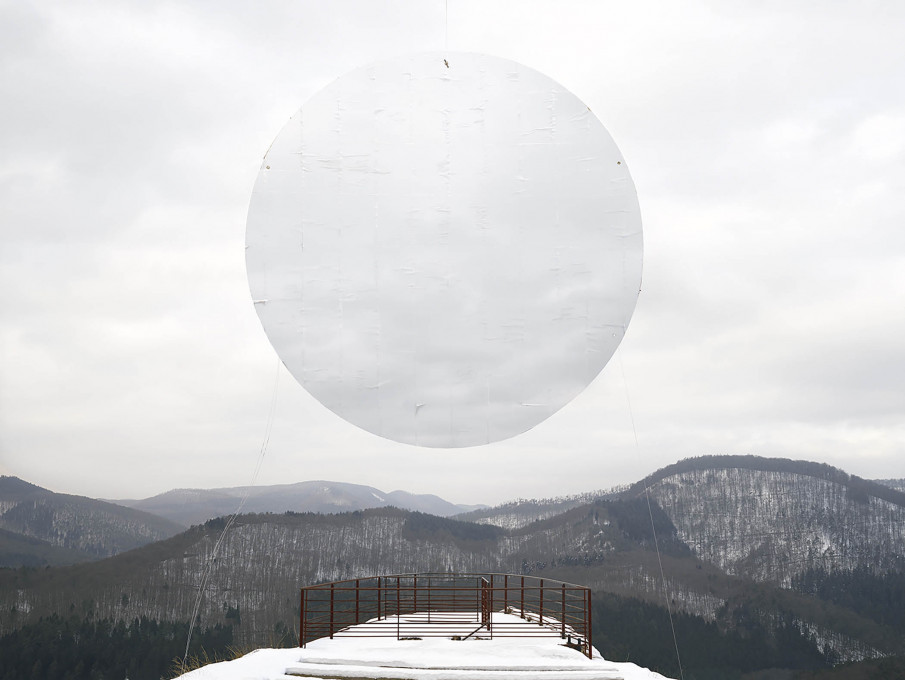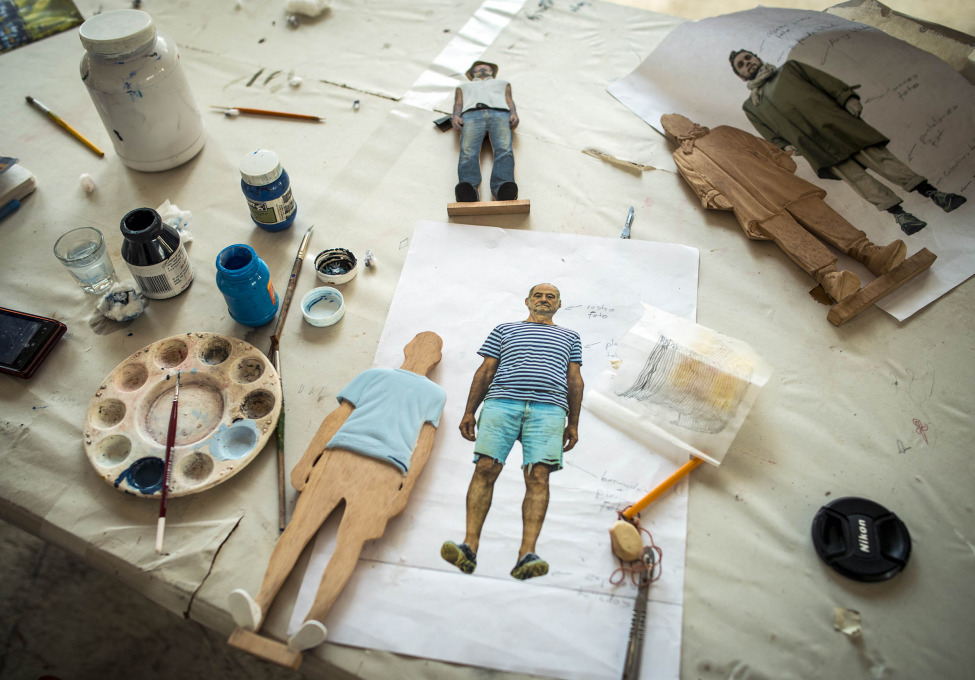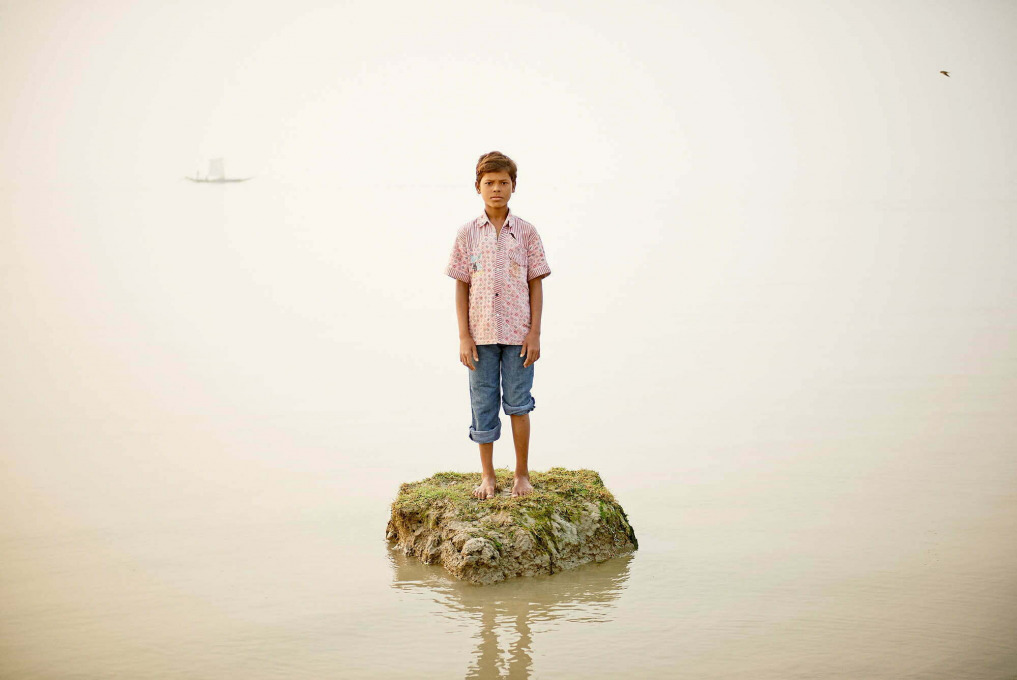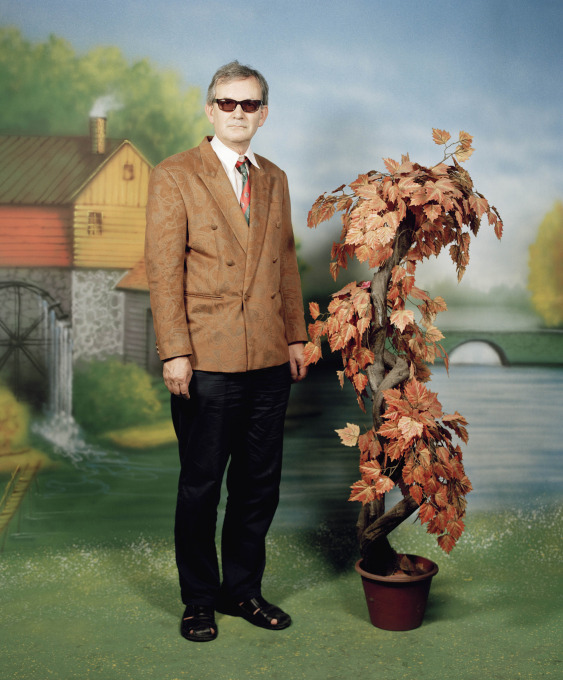Backdrop
- Membrana Vol. 3, no. 2
- 2018
editorial

editorial
Throughout its relatively short cultural history, photographer’s studio backdrop has, alongside different props, served as a creative and imaginary place of wish fulfilment, aspirations or nostalgic longing. It has created and followed pictorial conventions, and at the same time broken with them. Lastly, in the digital age it has evolved into the ever and instantly changing backscreen in which the frivolous creativity seems to be unleashed in its fullness. Regardless of its form – either as a part of a fancy 19th century attic studio, characterless shopping mall cubicle, a makeshift setup in student admission office or as the portable backdrop of a street peddler portraitist – photographer’s backdrop is first and foremost a place of exchange of mastery of technique, desires, conventions and money. Guided by the wish it is a reproduction of prevailing social norms and conventions, or a temporary shelter from them. Even today there seems to be a certain charm in the sociability and ritualistic nature of old photographer’s studio backdrop practices. Not only that – backdrop always served as a background, a frame, an ideological grid – artistic and scientific – on which the object of interest, desire or investigation itself was superimposed, thus delineating, exposing, accentuating its features.
Artists and Projects
- Belda Productions, Berfin Studios, BIND Collective, Borut Peterlin, Caroline Molloy, Christopher Pinney, ClickDigital Studios, Daesung Lee, Dragan Arrigler, Hrair Sarkissian, Janaki Somaiya, Josip Pelikan, Ketaki Sheth, Lukas Birk, Martin Parr, Naresh Bhatia, Noémie Goudal, Olja Triaška Stefanovič, Performing Pictures, Samsul Alam Helal
Content
This essay traces the resurrection of the fotoescultura, a three-dimensional photographic portrait popular in rural Mexico in the early 20th century, as interpreted in recent works by Performing Pictures, a contemporary Swedish artist duo. The early fotoesculturas were an augmented form of portraiture, commissioned by family members who supplied photographs that artisans in Mexico City converted into framed sculptural portraits for display on family altars. We compare these »traditional« photographic objects with “new” digital forms of video animation on screen and in the public space that characterize Performing Pictures work, and explore how the fotoescultura inspired new incarnations of their series Men that Fall. At the intersection between the material aspects of a “traditional” vernacular art form and “new” media art, we identify a photographic aesthetic that shifts from seeing and perceiving to physical engagement, and discuss how the frame and its parergon augment the photographic gaze. The essay is accompanied by photos and video stills from Performing Pictures’ film poem Dreaming the Memories of Now (2018), depicting their work with the fotoesculturas.
- Keywords: fotoesculturas, frame, parergon, vernacular photography, videoart
Karin Becker is professor emerita of media studies at Stockholm University. Originally based in the US, her early research focused on documentary photography and photojournalism in the US and its European influences. She has investigated a broad range of visual media forms and practices, and has led major research projects on global media events and art installations as mediated through the public space. Visual ethnography has been central to her methodological approach. Since 2008, her research has included an ongoing study of Performing Pictures’ work in Sweden and southern Mexico. Becker is currently engaged in the research project Screening Protest (www.screeningprotest.com), where she is analysing the visual coverage of protests as mediated in transnational television news broadcasts.
Karin Becker: karin.becker@ims.su.se, Department of Media Studies, Stockholm University, Sweden
Geska Helena Brečević is an artist and independent researcher working mainly in Sweden, Mexico and Croatia. In 2004, she and Robert Brečević formed Performing Pictures (www.performingpictures.art). Together they make film and video installations that blur the lines between still and motion media. Their work, supported by numerous national and international grants, has resulted in more than 20 solo and 50 group shows as well as commissions for several permanent public art installations. Her artistic research has been carried out with the support of The National Arts Grants Committee, the Royal Institute of Arts and the National Swedish Research Committee. Geska is currently the artistic director of the Film Capital Stockholm’s project Smart Kreativ Stad (www.smartkreativstad.com) investigating new perspectives on moving images in the public space.
Geska Helena Brečević: geska@performingpictures.se, Performing Pictures, Sweden
- Batchen, G., 2001. Vernacular Photographies. In: Each Wild Idea: Writing, Photography, History. Cambridge MA: MIT Press, pp. 57–80. https://doi.org/10.7551/mitpress/2541.003.0004
- Day, D., 1998. A Survey of Frame History, Part 1: Panel Painting. Picture Framing Magazine, (August), pp. 82–84.
- Derrida, J., 1987. The Truth in Painting. Chicago: University of Chicago Press.
- Faludi, S., 1999. Stiffed: The Betrayal of the American Man. New York: William Morrow and Company.
- Garza, M., 1998. Fotoescultura: A Mexican Photographic Tradition. Albuquerque: University of New Mexico Art Museum.
- Garza, M., 2000. No me olvides: The Fotoescultura. A Mexican Photographic Tradition. Albuquerque: University of New Mexico Art Museum.
- Garza, M., 2002. Secular Santos. Afterimage, 29(6).
- Scheinman, P., 1996. Foto-escultura. Luna Córnea, pp. 97–101.
- Scheinman, P., 2000. Vernacular Photographies. History of Photography, 24(3), pp. 262–271.
- Williams, R., 1961. The Long Revolution. London: Chatto & Windus.
BIND is an open platform for photography, focusing primarily on photobooks. Photo.circle is a platform for photography in Nepal and the organiser of Photo Kathmandu. In 2011, photo.circle set up Nepal Picture Library, a digital photo archive that hopes to contribute to the study of Nepali photography, generate knowledge and raise questions about how we can explore issues of memory, identity, and history through images.
DOWNLOAD PDF:
Ketaki Sheth has been a photographer for 30 years. She has published four books including Photo Studio (Photoink, New Delhi, 2018), her first in colour. Her work has been exhibited both in India and overseas. She has had solo shows at The National Portrait Gallery, London (2015), The National Gallery of Modern Art, Delhi (2013), Higashikawa Museum (Hokkaido, 2006) & The Emile Zola Galerie (Aix en provence, 2008) amongst others. Her other publications include, Twinspotting: Photographs of Patel Twins in Britain & India (Dewi Lewis Publishing, UK 1999), Bombay Mix (Dewi Lewis UK and Sepia NY, 2007) and A Certain Grace: The Sidi, Africans of India (Photoink, Delhi, 2013). Her works reside in major museums including Fogg Museum / Harvard, Higashikawa Museum, Kiran Nadar Museum of Art, The Museum of Modern Art and The Metropolitan Museum in NY. She is represented by PHOTOINK. She lives in Mumbai.
DOWNLOAD PDF:
impressum
MEMBRANA 5 / 2018 • ISSN 2463-8501 • https://doi.org/10.47659/m5
publisher: Membrana, Maurerjeva 8, 1000 Ljubljana • tel.: +386 (0) 31 777 959 • email: info@membrana.org
editors: Jan Babnik (editor-in-chief), Ilija T. Tomanić
editorial board: Mark Curran (Dublin Institute of Technology, Ireland; Freie Universität Berlin, Germany), Ana Peraica (independent researcher, educator, Croatia), Witold Kanicki (UAP Poznań, Poland), Miha Colner (International Centre for Graphic Arts, MGLC, Ljubljana, Slovenia), Lenart Kučić (independent journalist, Pod črto, Slovenia), Emina Djukić (University of Ljubljana, Slovenia), Jasna Jernejšek (independent researcher, curator, Slovenia), Asko Lehmuskallio (University of Tampere, Finland), Devon Schiller (independent researcher, USA), Robert Hariman (Northwestern University, USA) • advisory board: Alisha Sett, Andreia Alves de Oliveira, Iza Pevec, Matej Sitar
article contributors: Karin Becker, Geska Helena Brečević, Jasna Jernejšek, Martin Parr, Ana Peraica, Emina Djukić, Christopher Pinney, Paolo SH Favéro, Lukas Birk, Iza Pevec, Caroline Molloy, Janaki Somaiya, Helena Vogelsang, Urška Savič
translations: Tom Smith • proofreading: Tom Smith, Anja Kos
image & projects contributors: BIND Collective, Hrair Sarkissian, Martin Parr, Lukas Birk, Christopher Pinney, Naresh Bhatia, Ketaki Sheth, Caroline Molloy, Samsul Alam Helal, Janaki Somaiya, Daesung Lee, Noémie Goudal, Olja Triaška Stefanovič, Borut Peterlin, Dragan Arrigler, Josip Pelikan
design: Primož Pislak
printing: Cicero • print-run: 400
all images and texts © Membrana, except when noted otherwise • editorial photograph: Samsul Alam, from the series Love Studio, 2010–2015 • last page photo from: part of a backdrop, Icon Studio, Numawongo Market II, Bukasa Parish, Kampala, Uganda (photographers Tim Prince in Eddy Tumwine), 2014. Photograph by: Jan Babnik.
